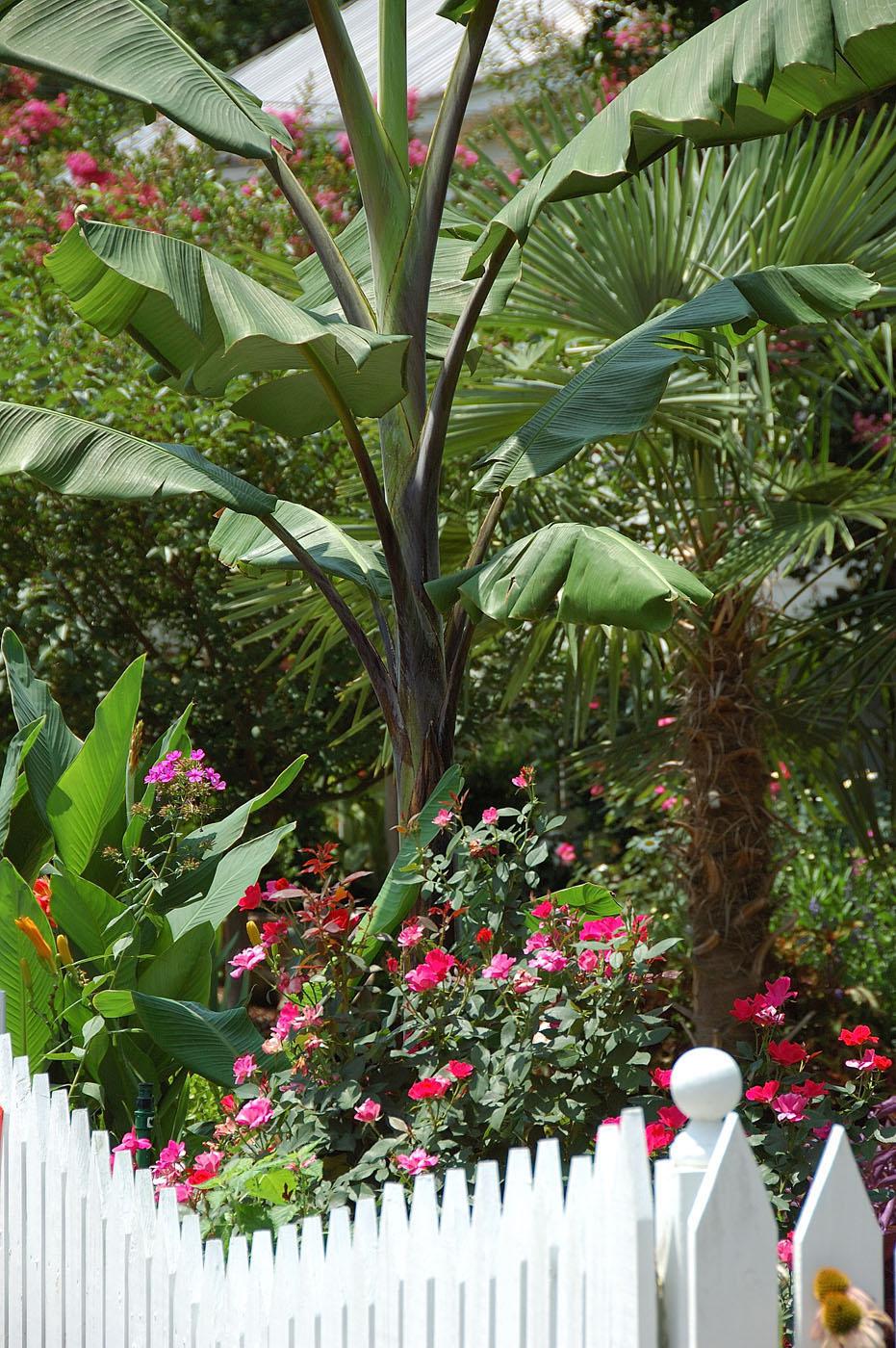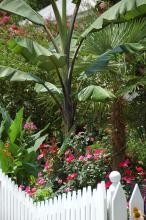Information Possibly Outdated
The information presented on this page was originally released on July 9, 2009. It may not be outdated, but please search our site for more current information. If you plan to quote or reference this information in a publication, please check with the Extension specialist or author before proceeding.
Black Thai banana offers staggering beauty
By Norman Winter
MSU Horticulturist
Central Mississippi Research & Extension Center
The Black Thai banana was one of the most sought-after bananas at the early spring Mississippi Garden and Patio Shows. If you were like me, you missed the chance to grab one for yourself. My friend Barbara Harvey in Kosciusko did not miss out on the opportunity to brighten up her landscape with this banana.
Barbara says her Black Thai seems to grow a foot a day. I was shocked to see how much it had grown from April through the first of July. Some commercial producers suggest that it can grow to 18 feet tall and reach a second story roof. This plant makes you want to invite the neighbors over to cook out and sit and watch it grow. The Black Thai is the perfect choice for those of us who love tropical plants.
A few weeks ago, I told you about the new and popular Siam Ruby banana, which is dark red with lime green variegation. The Black Thai differs in that it has a deep purple, almost black, color from its pseudostem, or trunk, up to the petioles of the large leaves. The leaves are slightly thinner than most banana plants’ leaves; if you don’t like the torn island look, protect them from the wind.
Botanically speaking, the Black Thai is a selection of Musa balbisiana. The species has played a critical role in banana hybridizing. It is also an important species for the production of yarn and fiber. Additionally, it is another cold-hardy banana choice. The Black Thai is close to rivaling the Japanese fiber banana Musa basjoo, able to survive in zone 7 and possibly zone 6.
Winter hardiness may be attributed to how well the soil drains. There are spots in my landscape that stay wet from December through March. This situation is not suitable for bananas except in zones 9 and higher. But if you have a fertile, organically rich soil, you will see positive results from planting it on raised beds with a good layer of mulch.
While the north has been inundated with rain, the south has been battling heat and dryness. In these brutal conditions the tropical plants have risen to the occasion, and the Black Thai banana is no exception.
A benefit of the Black Thai is that it suckers, or produces new growth shoots. Its shoots give you more to spread around the landscape, share with friends or improve the chances of a spring return in the event of an abnormally cold winter. The Black Thai may be the ultimate thriller plant in a large atrium tub. Like all bananas, it will need plenty of water and some sunlight to reach its true potential.
After my Siama Ruby column, I received a few e-mails and letters from readers who ended up not liking the bananas and wanting to get rid of them. If you are of this mindset, then by all means avoid the Black Thai.
On the other hand, if you have enjoyed trips to tropical destinations such as Martinique or Guadeloupe, you will certainly like the look the Black Thai can help you create at home. Combine them with gingers, elephant ears and hibiscus and you will have smooth sailing, Caribbean style.








